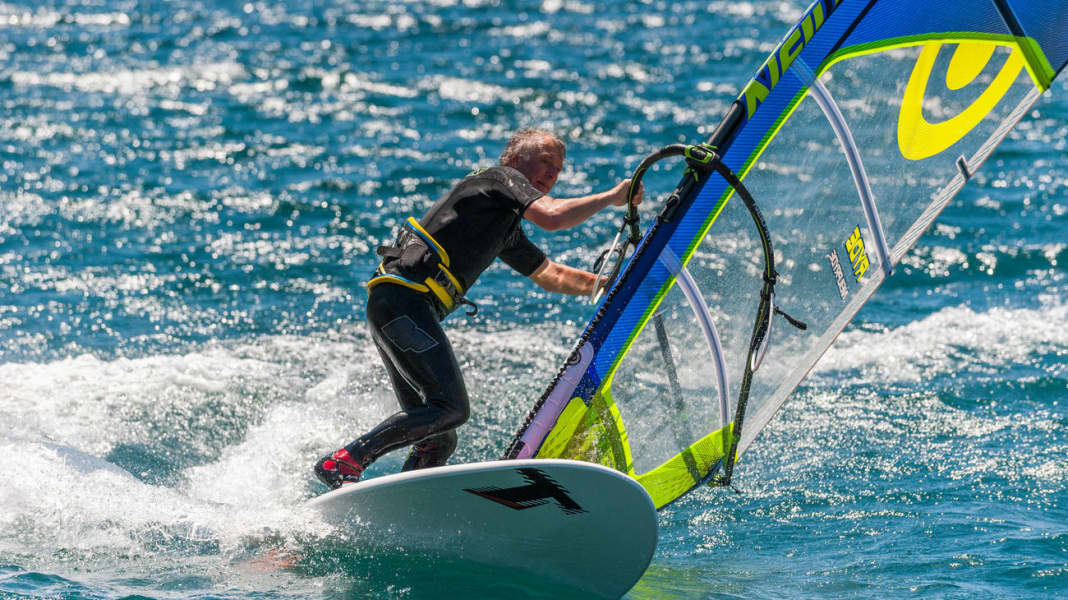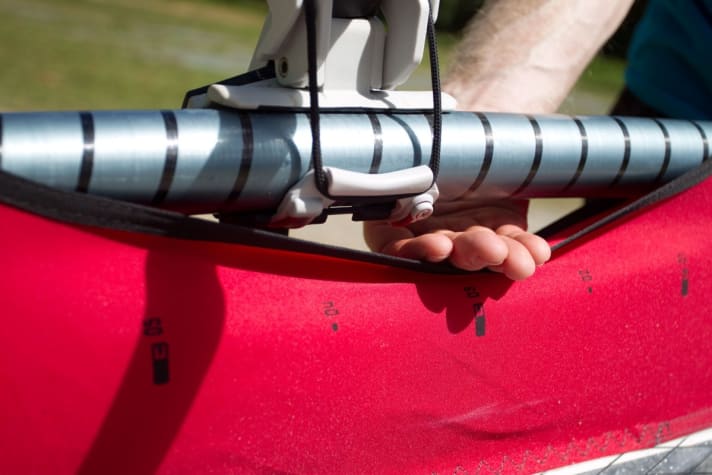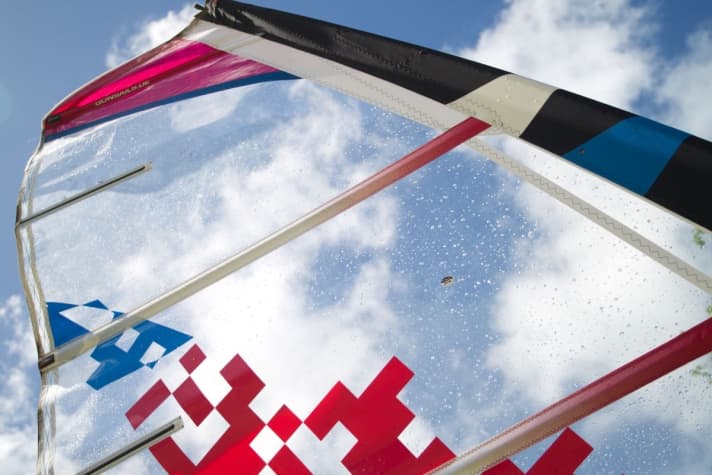
Pulling tight, gliding off and racing across the clear water, with a little jump in between and a sleek jibe to turn round - that's freeriding! And because for a large part of the surfing community this is exactly what makes windsurfing so appealing, freeriders are by far the largest group in this sport. The range of products offered by manufacturers in this segment is correspondingly large.
Freeride sails, which are mainly available in sizes from 5.5 to 8sqm and are stabilised by five to six battens, should deliver good planing performance, be controllable for a long time and be easy to handle in manoeuvres such as jibes. The designers achieve this with the following basic characteristics:




Do you want to plane effortlessly, speed across the lake and hone your first jibes or small jumps? Then freeride sails are just your thing!
There are practically no freeride sails available in sizes under 5.5 square metres, so you are forced to resort to wave or freemoving sails, which are also suitable for use in flat water. So don't be surprised if you don't find any freeride sails in this size range...
If you are more ambitious and are already practising basic freestyle manoeuvres (carving 360, airjibe), loops or your first wave rides, a freemove or wave sail may make more sense, as the additional reinforcements then benefit durability in the event of falls. The slightly more compact boom dimensions of these sail types also help with manoeuvrability when practising your first freestyle tricks or wave riding.
If, on the other hand, you are chasing your personal speed record on fast slalom boards and with loops positioned far out, you can also consider freerace sails. These have more performance potential due to the camber and deeper profile, but also noticeably poorer handling and a higher price.
Ideal board type for this sailing group:Freeride, Freemove
